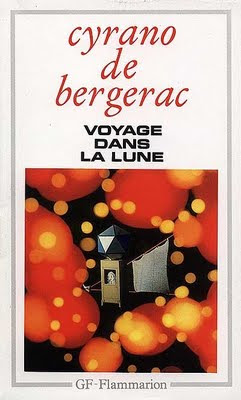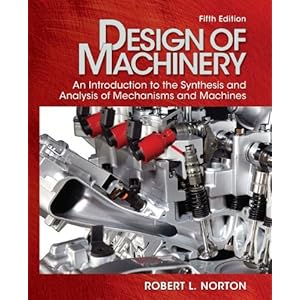Reading is something we typically do alone—holding a book, gazing at a computer screen, thumbing through a newspaper. Yet now people are talking about “social reading” as a shared activity, enabled by the proliferation of devices and software that combine reading with community.
I recently came across a proposed taxonomy of social reading, from book groups to online discussions to collaborative authoring. Authoring? Well, with dynamic texts and increasing interaction between authors and readers, the distinction between reading and writing starts to fade away.
 One way to enable social reading is to integrate the text with user-contributed comments. CommentPress and Digress.it are WordPress plugins that allow comments on a per-paragraph basis, placing them in a sidebar so you can view them alongside the relevant content (instead of scrolling to the bottom). In browsing examples of such content, such as the taxonomy mentioned above or an online version of Candide, I find myself intrigued but also a bit mentally fragmented. Jumping back and forth between the main text and the comments mashes them together, which perhaps is the point, or maybe reading nonlinear content like this just takes some practice. It certainly does give the feeling of being in a group, discussing the text, rather than being a solo reader. I’d probably find this most useful for non-fiction, when a critical analysis or discussion of the topics is a higher priority. For fiction reading, I’m happy to dive in and be immersed all on my own, at least for the first pass.
One way to enable social reading is to integrate the text with user-contributed comments. CommentPress and Digress.it are WordPress plugins that allow comments on a per-paragraph basis, placing them in a sidebar so you can view them alongside the relevant content (instead of scrolling to the bottom). In browsing examples of such content, such as the taxonomy mentioned above or an online version of Candide, I find myself intrigued but also a bit mentally fragmented. Jumping back and forth between the main text and the comments mashes them together, which perhaps is the point, or maybe reading nonlinear content like this just takes some practice. It certainly does give the feeling of being in a group, discussing the text, rather than being a solo reader. I’d probably find this most useful for non-fiction, when a critical analysis or discussion of the topics is a higher priority. For fiction reading, I’m happy to dive in and be immersed all on my own, at least for the first pass.
Yet although these plugins (and the taxonomy) have been around since at least 2010, this was the first time I’d encountered them. An even older article, from 2009 (The Future of Reading by Tom Peters), discusses the evolving nature of reading, including a term that was new to me: “skimmy-dipping” (the process of browsing a list of links or citations and dipping into the interesting ones at different depths). While the term was new, the concept was not—this describes the way I process just about every Google search I do, especially those at scholar.google.com.
Peters’s article includes this great quote: “Reading is one human activity that is at once both intensely cerebral and lusciously sensory.” He also touches on the social reading idea with “In the good old days, first you read the book, then you discussed it with fellow readers. Now it is becoming a single, combined process.”
His article was published by the Library Journal, and his primary audience was librarians. This paragraph struck me as the most salient and interesting part:
“The impact of these new forms of reading on libraries and librarianship could be profound. For example, they may force us to confront the archival impulse and mission to preserve and protect. Books may cease to be fixed utterances that, once published (whatever that may come to mean), begin a long trip to eternity during which any changes in the text or the text-bearing-device are perceived as crimes against nature and against the inviolable text. Books may become more like fleeting communal experiences, with little or no promise of sustained integrity. Whatever their makeup, they will be books, and they will be read.”
I was inspired to look up these articles after a colloquium talk Tom Peters presented as part of the freely available SJSU SLIS Colloquium series. I highly recommend the iTunes subscription, which provides audio (good for commutes) or video (good when you want to see the slides) versions of these talks. From this and other talks in the series, my emerging view of librarians is that rather than clinging to physical books and bemoaning the advent of new technology, they are excited about the possibility of new ways of engaging with content and readers, and they’re industrious about staying on top of the latest developments. This makes my upcoming MLIS adventure all the more exciting!
This captures the way I feel about my own personal future of reading:

 It wasn’t all about the big nose and fighting duels. Cyrano de Bergerac also ventured into the realm of science fiction, although his two novels weren’t published until after his death. (He died young, at age 36!) The books are “L’Autre Monde: ou les États et Empires de la Lune (The Other World: The States and Empires of the Moon)” and “Les États et Empires du Soleil (The States and Empires of the Sun)”. I haven’t been able to read the books myself, but from reading about them online I gather that Cyrano was less concerned with scientific realism and more interested in using the fantastic realm as a platform for social commentary (and criticism). As such, his work is very much in line with a major current running through later science fiction; the displacement of people and personalities into a new environment uniquely enables us to gain perspective on our own strengths and weaknesses.
It wasn’t all about the big nose and fighting duels. Cyrano de Bergerac also ventured into the realm of science fiction, although his two novels weren’t published until after his death. (He died young, at age 36!) The books are “L’Autre Monde: ou les États et Empires de la Lune (The Other World: The States and Empires of the Moon)” and “Les États et Empires du Soleil (The States and Empires of the Sun)”. I haven’t been able to read the books myself, but from reading about them online I gather that Cyrano was less concerned with scientific realism and more interested in using the fantastic realm as a platform for social commentary (and criticism). As such, his work is very much in line with a major current running through later science fiction; the displacement of people and personalities into a new environment uniquely enables us to gain perspective on our own strengths and weaknesses.


 This textbook,
This textbook,